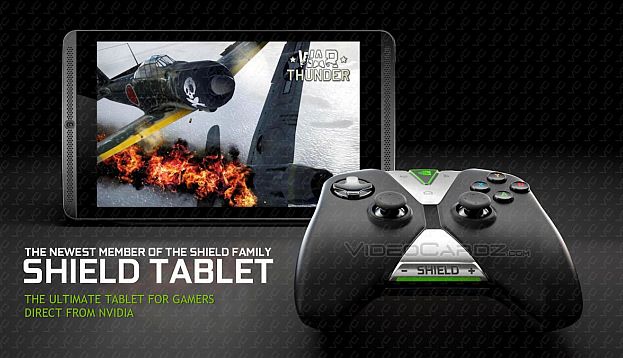Nvidia startled the game industry last year with the release of its handheld gaming console, the Nvidia Shield. The Android-powered device offered an unusual form factor and the ability to stream games from Nvidia graphics-card-equipped PCs, along with a $299 price tag. The device apparently never sold very well (though Nvidia never released sales figures), but it appears to have been something of a beginning for the tech firm. Rumors have intensified, along with leaked images and specs, that Nvidia is about to release not one but two new gaming devices with very different form factors.
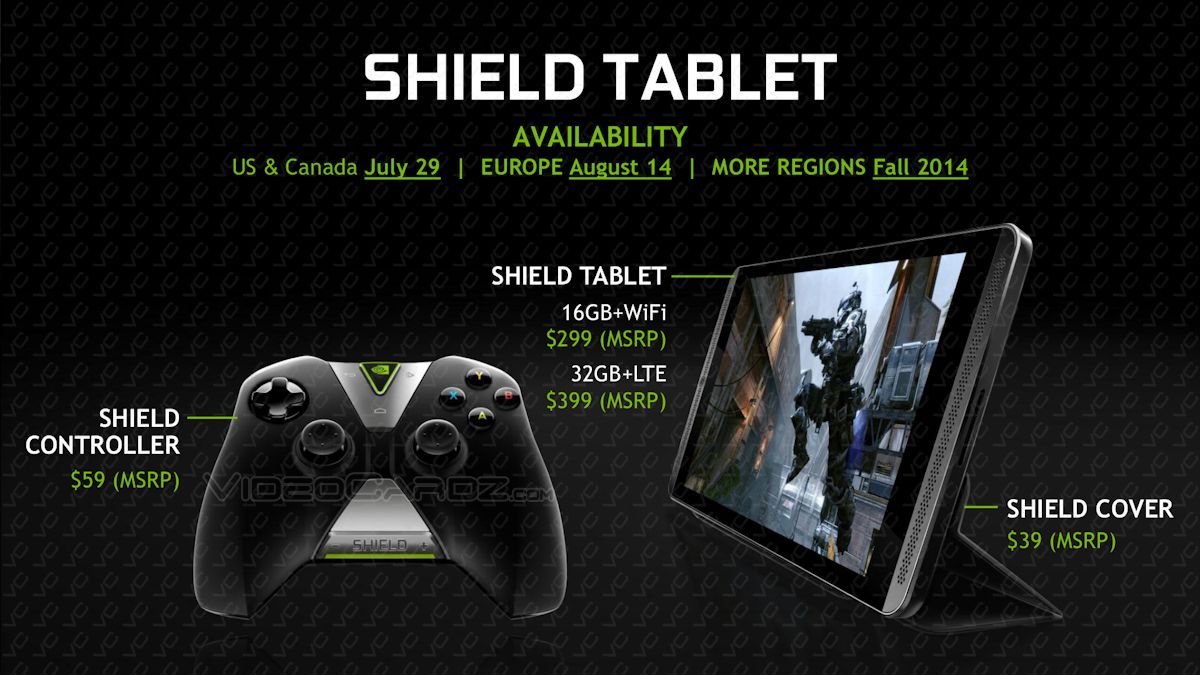
A report from the BBC indicates that one of these new gaming devices is a new Android-powered microconsole similar to an Ouya, a small box that plugs into a TV via HDMI, powered by Nvidia’s new Tegra K1 processor that has power comparable to an Xbox 30 or a PS3, according to the company. A “budget-priced” controller similar to standard console controllers will be used to navigate menus and play games. The micro-console’s crucial difference from other Android-powered consoles, aside from the extra power of the Tegra K1, will be use of the Nvidia GeForce Experience system that allows you to stream PC games from a nearby PC with suitably Nvidia-powered graphics. This may well give Valve’s Steam Machine concept a run for its money, as playing PC games on your TV is the main selling point for Steam Machines (which are apparently delayed until next year, according to Valve). Pricing is still unclear, but it’s likely to be in the $99 to $149 range that boxes like the Amazon Fire TV or the upcoming PS TV from Sony.
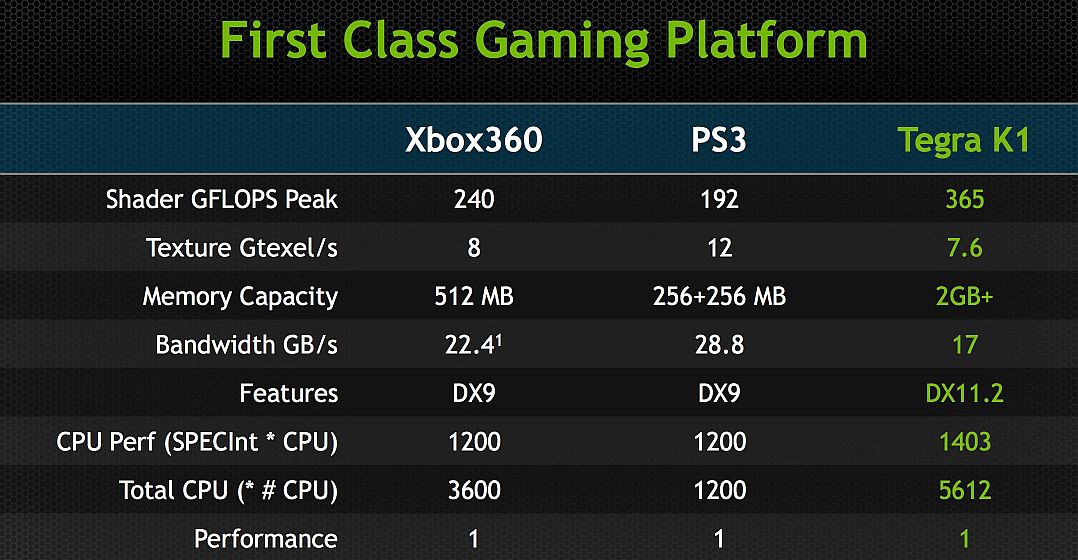
“I think it’s fair to say that Shield sold reasonably poorly,” said Ed Barton, a games industry analyst at the consultancy Ovum, who has now seen the new device. “And if the new device requires your PC to have a relatively new Nvidia GPU [graphics processing unit] to make use of its abilities, that will really limit its addressable market.”
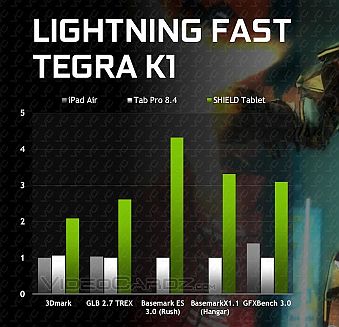
Nvidia’s second device is more ambitious, a powerful gaming-centric tablet with an array of cutting-edge features. The 8-inch tablet features a 1920 x 1200 IPS screen, driven by a Tegra K1 chip. The tablet has two front-facing speakers, a 5MP camera front and back, and comes in a 16GB ($299) and a 32 GB ($399) version; the 32GB tablet adds LTE connectivity with AT&T or T-Mobile (the device will ship unlocked). YOu can add Nvidia’s WiFi controller for $60, which boasts much lower latency than a typical Bluetooth controller. The Shield tablet will also include the GeForce Experience for streaming PC games from a compatible PC nearby.
The tablet is said to last approximately ten hours in terms of battery life, and includes a mini HDMI port. The device is also compatible with Nvidia’s DirectStylus technology, which was first made available in the low-cost Tegra Note tablet late last year. DirectStylus uses the Tegra chip to analyze touch input and detect the difference between a finger, a fine-tip stylus, and a blunt eraser end on a stylus. The result is an easy-to-use, passive stylus input system.
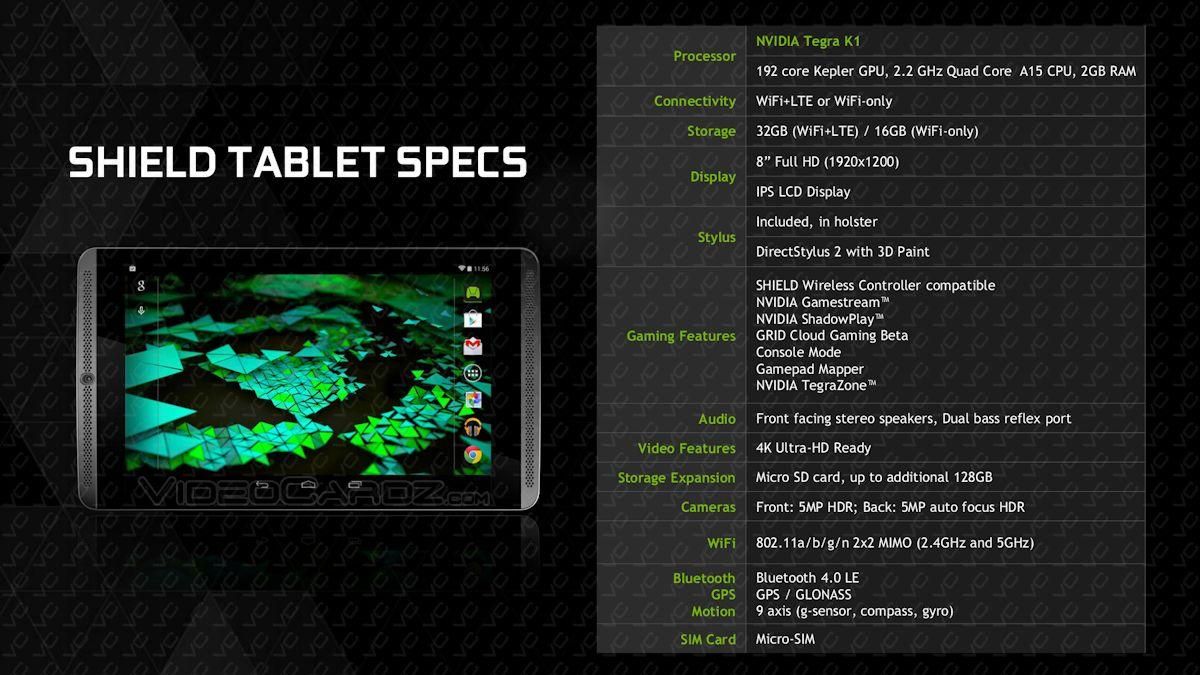
Nvidia hasn’t commented on either device yet, so we’ll see what’s announced over the next few weeks. The slides certainly look authentic, though. What’s not clear at all is Nvidia’s intent behind the devices. On the one hand they could be intended to demonstrate the power of the Tegra K1 chip in a tangible way to both gamers and other OEMs who are considering what chip to put in their devices. Nvidia could be looking to use these devices to help sell more Tegra K1 chips to other manufacturers.
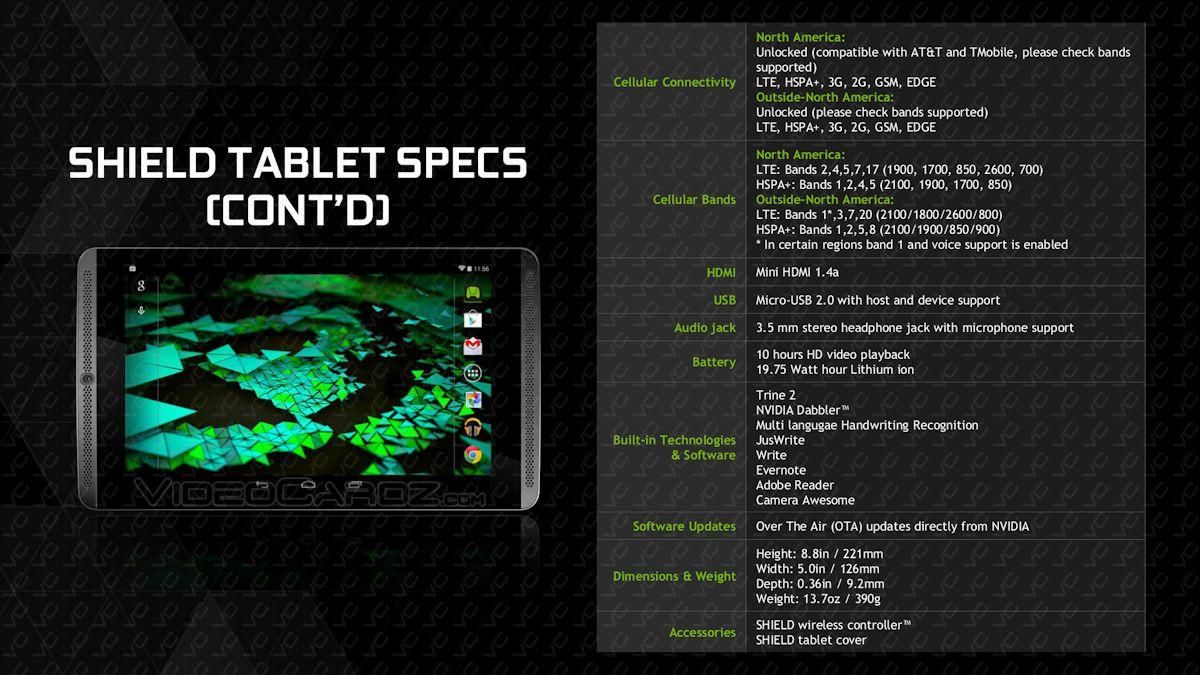
Or, Nividia could intend to actually make a dent in the microconsole and tablet market this time, and try to establish some significant sales and market share against a slew of similarly priced competitors. If that’s the case, Nvidia will need to put some serious effort into marketing and in courting game developers to support these devices. Like the original Nvidia Shield, both of these devices have good technology but will be unlikely to generate much in the way of sales without a strong effort to get some impressive games on the systems, and more importantly an exceptional marketing effort to inform and persuade the target audience to buy these devices rather than any of the competition.
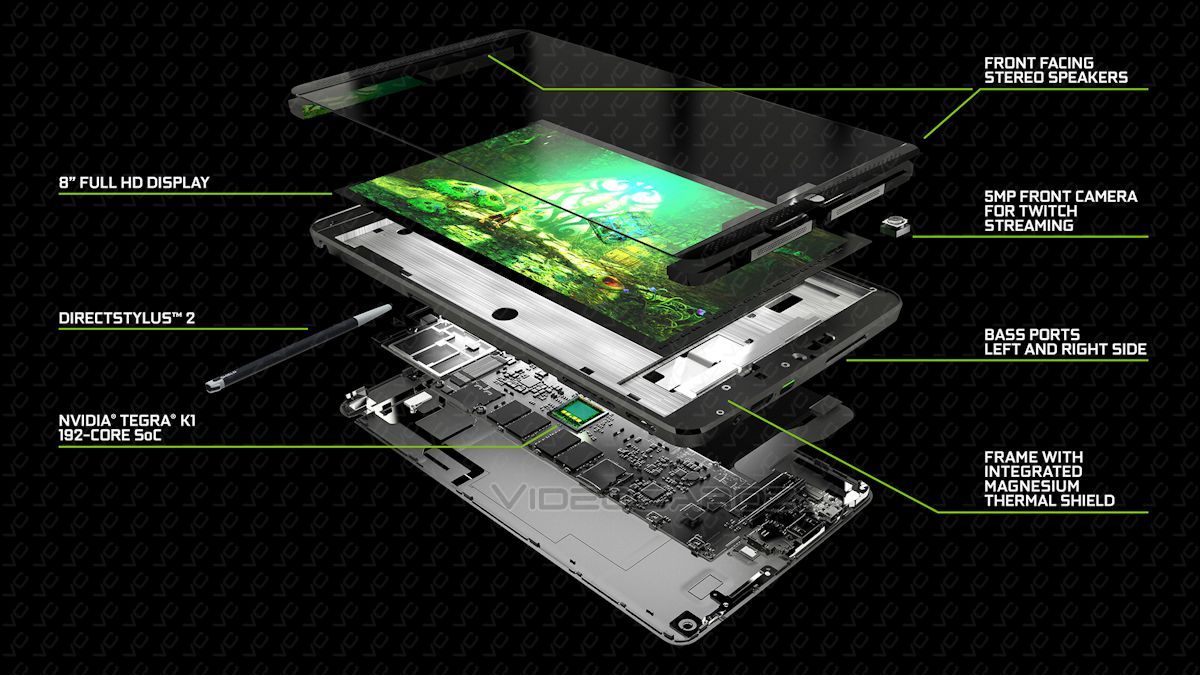
The technology used in Nvidia’s new devices is impressive, as the benchmarks show. Nvidia clearly believes its tablet will be the best gaming platform among tablets, and with the GeForce Experience technology you can get PC games on your tablet while playing with an exceptional controller (though that leaves aside the fundamental question of what to do with all those keyboard and mouse controlled PC games, but perhaps you could add on Bluetooth devices for that… but then you’ve lost that compelling portability argument).
Still, features and specs aren’t sufficient to sell devices — what counts is the experience that the specs deliver. Can Nvidia point to compelling games you can only play on its devices What sort of publisher support can or will Nvidia be able to line up If Nvidia does have an array of great games to go with this hardware, can the company find a way to get that message out to consumers and convince them to buy these devices That’s a tall order, considering the sheer volume of marketing effort that will be expended the rest of this year. Nvidia will be competing for attention with full-powered next-gen consoles, current-gen consoles, microconsoles from the likes of Amazon, Sony, Google and Apple, along with a slew of new tablets and smartphones with marketing budgets measuring in the billions.
This holiday season will see some intense marketing as gigantic companies battle for scarce pool of consumer technology dollars. And it is ultimately a zero-sum game: There will be winners, and there will be losers. Only one thing is for sure: The battle for hearts, minds and wallets will be epic indeed.
Source: Digital Trends
IMages: Videocardz.com
